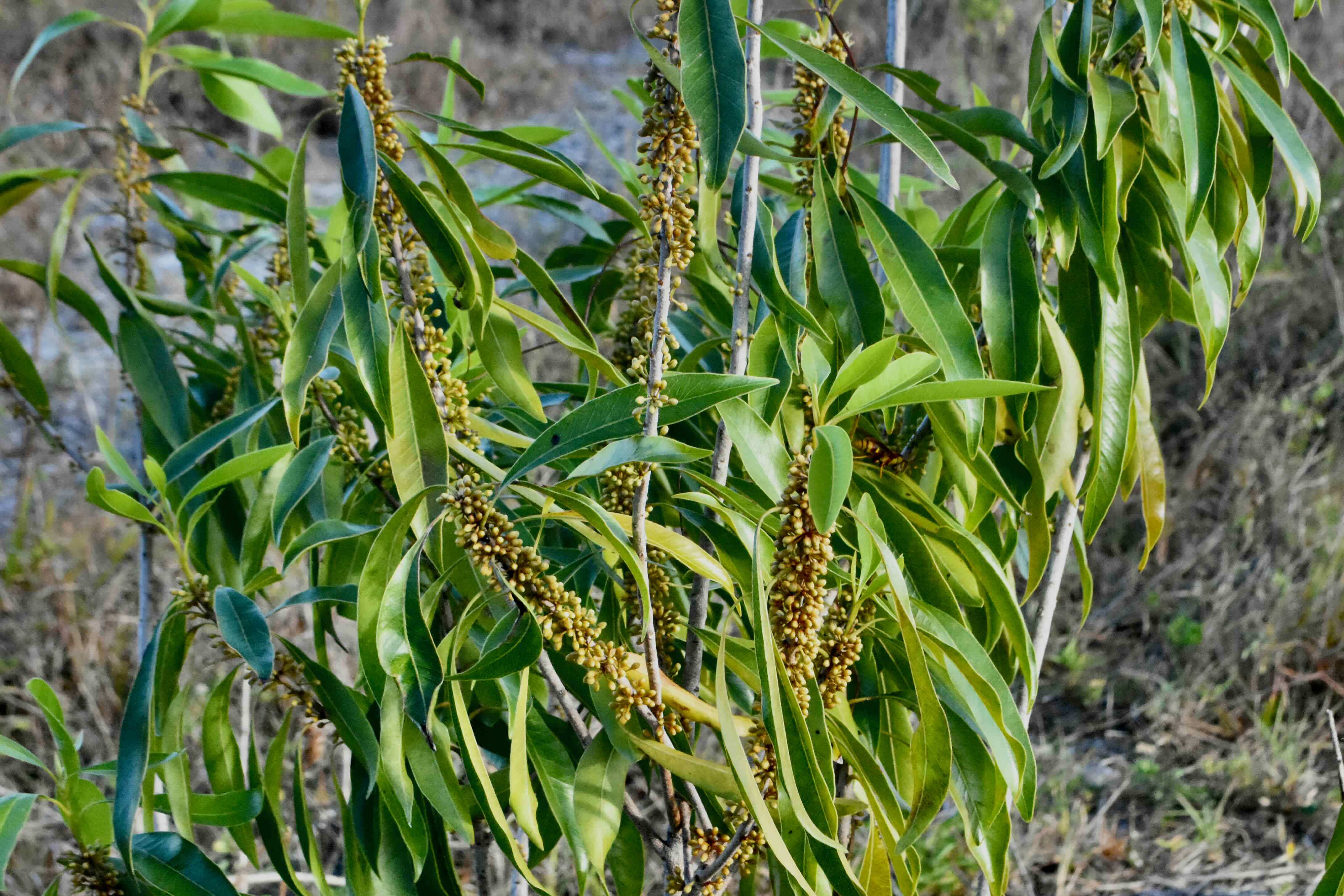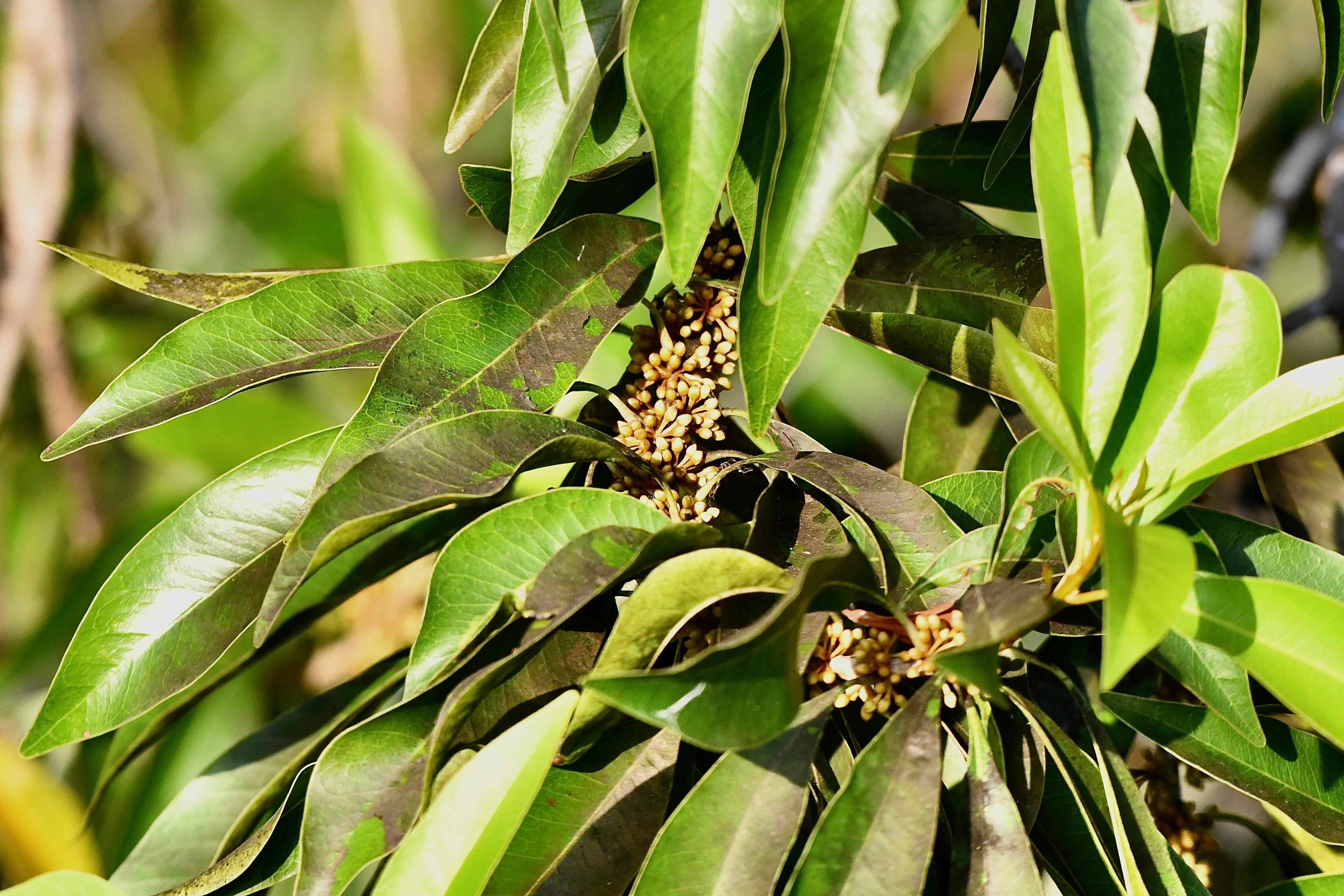
Willow Bustic photographed at Everglades National Park, Homestead, Miami-Dade County, in April 2025.
Willow bustic, Sideroxylon salicifolium might vaguely resemble a willow with it’s long, graceful leaves, but it most definitely is not.
Rather, this Florida native is a tree/shrub of the tropics and subtropics and a member of the sapodilla family. It’s fairly common, found in every South Florida county sans Lee, while adding Hendry to the mix.
Florida is the far northern point of willow bustic’s range, and it is the only state in the union where it’s found in the wild.
Beyond our borders, willow bustic can be found in parts of Mexico, Guatamala and Belize, through the Bahamas and other parts of the Caribbean.
Habitats include pinelands, savannas and hammocks. The photos seen above and the center and right below were taken in wet prairie in late spring at the height of the dry season. The soil there was atop a limestone substrate (typically what willow bustic likes) but so thin that it was amazing that any plant could eke out a living there.
Willow bustic takes to full sun or part-shade.
It is a multi-stemmed shrub or small tree that can grow between 25 and 75 feet tall, though generally on the shorter side. The leaves are about four inches long and relatively narrow, with entire margins — no lobes or serrations along the edges. They grow alternately along the stem. As we noted and as noted in both the common and scientific names, the leaves do resemble those of a willow tree.
It is deciduous, meaning it drops its leaves annually, but new ones grow in almost as quickly as the old ones drop. The bark on willow bustic is smooth and gray, but becomes furrowed the older and larger it becomes.
Willow bustic blooms from spring into summer. The flowers form in whorls along the stems. They can be white, cream-colored or yellow, on the small side, and while not exactly showy individually, they do attract the eye collectively because of their unusual arrangement.
They give way to small, green berries that turn dark blue or black as they mature. Birds do eat them. Green Dean, our favorite Florida forager, describes them as “being on the cusp of edibility.” They won’t poison you but they are chewing gum chewy and don’t taste all that appetizing. They’re also a bit on the acidic side, and woe unto those with with sensitive lips who consume too many of the berries; they might get burned a bit.
They are eaten out of hand, so if you want to try a few, be our guest. Just don’t overdo it.
By the way, while the berries are chewy, so is the white sap bustic willow secretes. It’s a characteristic common to members of the sapodilla family.
Bustic willow is cultivated and used as a landscape element, available at a few nurseries that specialize in Florida Natives. Its wood is prized, hard, yet easy to work. It’s used used in heavy construction but also in finer projects like furniture- and cabinet-making. It's apt to note here that the genus name, Sideroxylon, comes from the Greek: sideros, meaning iron, and xylon, meaning wood.
The Seminoles used bustic willow to make spoons for food preparation and bows and arrows.
Other common names include white bully, bustic and also spelled willow-bustic. It is a member of Sapotaceae, the Sapodilla family.
Everglades National Park



